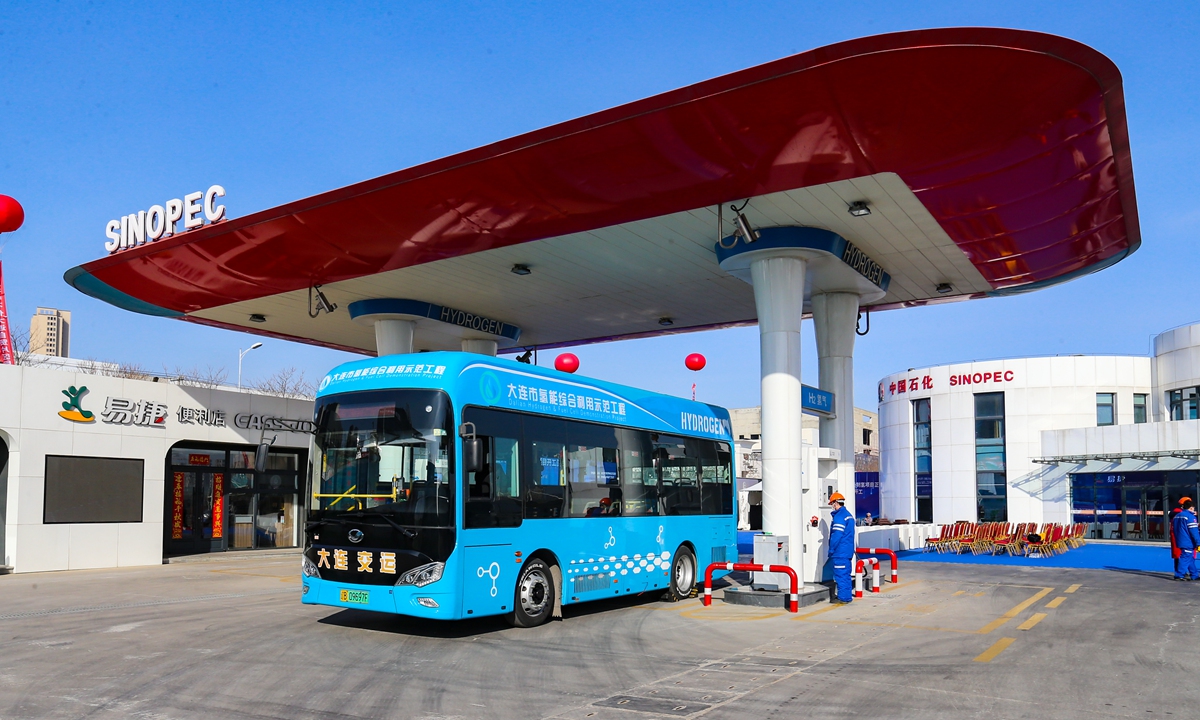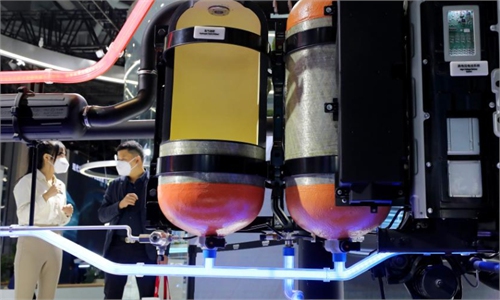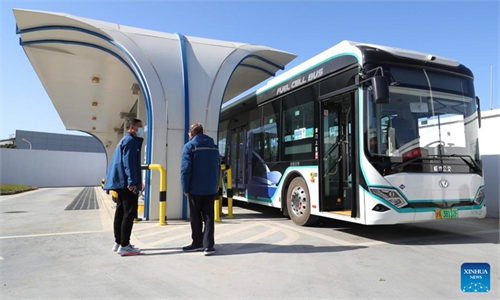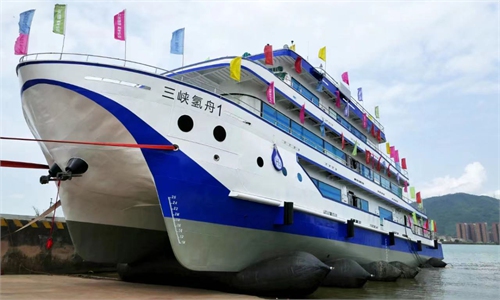China launches trans-regional, long-distance hydrogen pipeline from Inner Mongolia to Beijing

A bus fills up with hydrogen fuel at a station in Dalian, Northeast China's Liaoning Province on February 15, 2023. The station is the first of its kind that produces hydrogen fuel from methanol and loads the fuel into vehicles in China. It can produce 1 ton of high-purity hydrogen a day at 99.999 percent. Photo: VCG
China's first trans-regional hydrogen pipeline project has been included into the national fuel transmission network development blueprint, marking a new phase for the green fuel to be transported from the country's vast west to the coastal east where energy consumption is concentrated.
Sinopec, the country's largest oil refiner and operator of the pipeline, announced on Monday that the project designed to channel green hydrogen from Ulanqab, North China's Inner Mongolia Autonomous Region, to Beijing, via a 400-kilometer-long pipeline. It will pass through North China's Hebei Province in between.
When completed, it will replace the Beijing-Tianjin-Hebei region's fossil fuel-based hydrogen production and help meet hydrogen demand in the transport sector, playing a pioneering role in trans-regional hydrogen transmission and promoting the nation's energy transformation and upgrade.
The first phase of the pipeline is expected to handle 100,000 tons of hydrogen each year and has the potential to increase the capacity by 500,000 tons in the long run, according to Sinopec.
Green hydrogen refers to hydrogen produced by renewable energy such as wind and solar power, and is regarded as one of the most promising clean energy sources. Inner Mongolia is rich in natural beauty and resources, and has unique advantages in developing green hydrogen.
Transporting green hydrogen from the west to coastal regions with high demand in the east has been a bottleneck restricting the development of green hydrogen industry.
At present, long-tube trailers are the most common method of long-distance hydrogen transportation in China, but high cost and low efficiency have pushed up prices, which largely restricts the development of the industrial chain.
In comparison, hydrogen pipelines can realize large-scale, long-distance transportation in a more economical way.
As China's largest hydrogen producer, Sinopec has taken a leading role in forming the core technology system for hydrogen pipelines, filling the gap in standard compilation in the industry.
The state-owned operator's first green hydrogen demonstration project in Inner Mongolia broke ground in Ordos in March. It is the world's biggest project using solar and wind power to produce hydrogen with annual production capacity of 30,000 metric tons.
There is still a long way to go for China to catch up with other countries in terms of hydrogen pipeline operation.
Currently, the total mileage of hydrogen pipelines around the world has exceeded 5,000 kilometers. Among them, the US has built hydrogen pipelines exceeding 2,500 kilometers, while China is still in its infancy, according to Sinopec.
The 14th Five-Year Plan (2021-25) period turned out to be a critical period for the low-carbon transformation of China's energy and chemical industry.
Hydrogen energy, as a secondary energy with diverse sources, is clean, low-carbon, flexible, and efficient. Many countries have incorporated the development of hydrogen energy into their national strategies.
China started top-level planning for hydrogen energy as early as 2020.
According to the latest government plan released by the National Development and Reform Commission in March, China would produce 100,000 to 200,000 tons of hydrogen annually and have a fleet of 50,000 hydrogen-fueled vehicles by 2025.
Global Times



